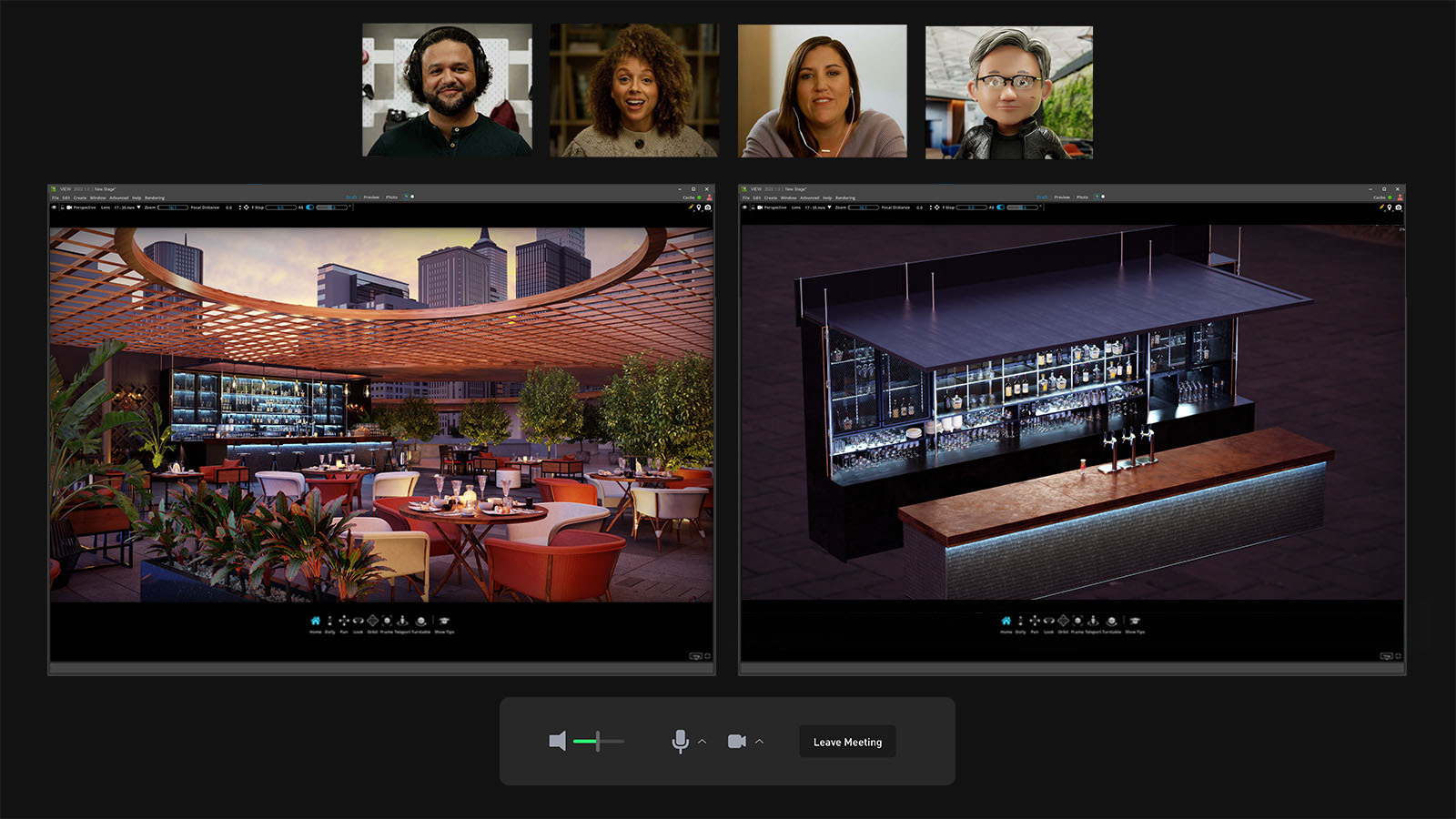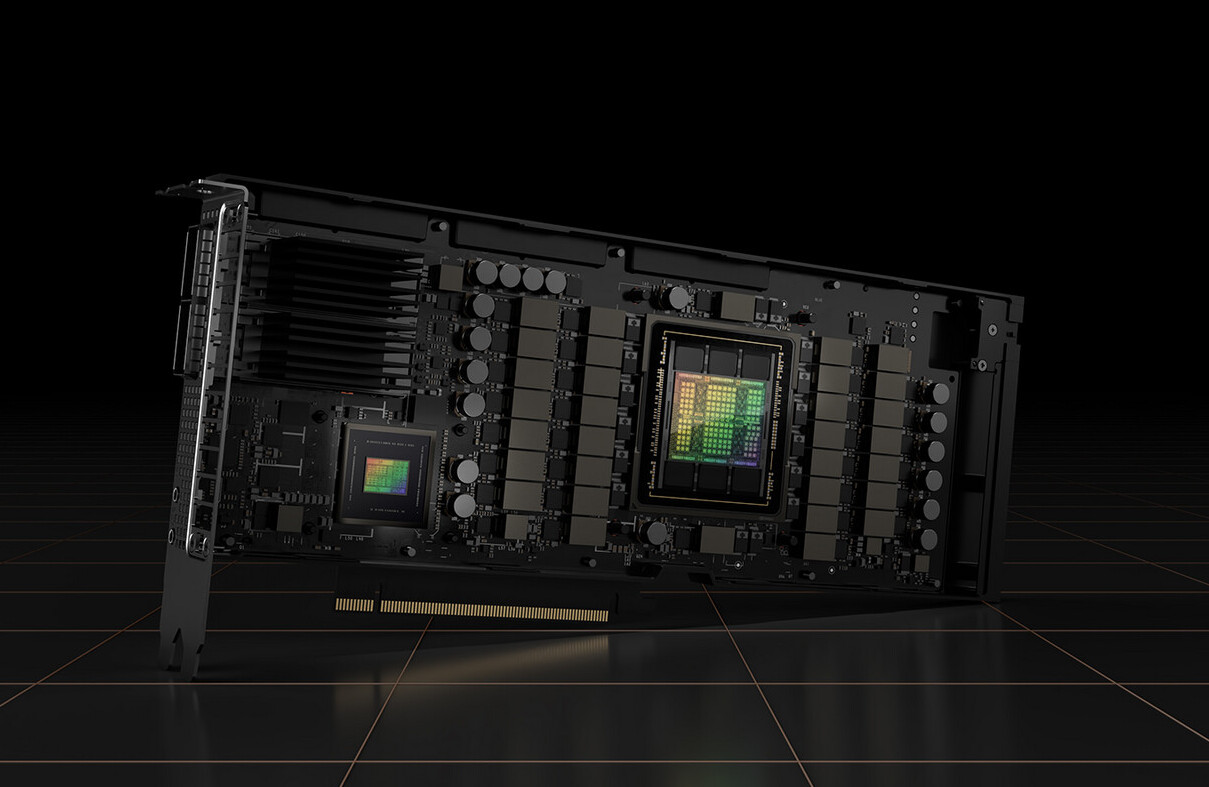CES isn’t the place for more of your metaverse nonsense, Nvidia
Shut up about the metaverse! Shut up about the metaverse!!

‘Twas the night before CES, and I was very much a creature stirring with excitement. Nvidia was due to take center stage for a major livestreamed presentation, and we all knew what that meant: new graphics cards, baby! Get hyped!
Except, don’t get too hyped. Back in September 2022 (oh lord, it’s 2023 already?), we watched in awe as CEO and founder Jensen Huang unveiled the RTX 4090 at Nvidia’s Fall GTC showcase. The most powerful GPU in the world, folks! A graphics card with the sort of processing power young me could only dream of; 8K gaming, ridiculous framerates, and AI-powered tech wizardry all under the hood.
Sure, it might’ve been ludicrously expensive and followed by the decidedly lacklustre RTX 4080 (and, at the time, it’s 12GB little brother which ended up getting hastily unlaunched), but it was still tantalizing to finally see Nvidia’s RTX 4000 series arrive. I couldn’t even be that mad about the lack of budget or midrange cards in the launch lineup; sure, I still really wanted to see the RTX 4060, but as a lifelong gamer and PC-builder the raw might of the 4090 was a sight to behold.
Or at least, it was very briefly a sight to behold, before the esteemed Mr Huang swiftly swept aside his newly-announced GPUs like a child bored with a new toy, and proceeded to spend almost the entire remainder of this 90-plus-minute presentation yammering on about something called ‘the Nvidia Omniverse’.

Better than meta
You can go back and watch the original livestream yourself if you don’t believe me. Judging by the comments section while I was tuning in live, most of the viewers were - like me - gamers excited by the prospect of uber-powerful new GPUs to take their high-end gaming rigs to the next level.
Why, then, was this the place for a full hour of waxing lyrical about the metaverse and how Nvidia was going to take its business into this virtual space? A YouTube livestream packed with graphics-hungry gamers felt like a strange audience for the presentation, where Huang explained in excruciating detail how the Omniverse would supposedly revolutionize the business world, helping with everything from weather prediction to public transport development to 3D animation for entertainment media.
It was, in a word, boring. We barely got a glimpse of the new GPUs on offer despite the length of the showcase, and our joy was tempered by the brutal price tags. The still-vague language that seems to surround every metaverse-related endeavor didn’t help, either: the presentation ended with me (and likely many other viewers) wondering exactly what the Omniverse was supposed to be.
If we go to Nvidia’s own web page about the Omniverse, things don’t immediately become clear. There’s something about the ‘3D internet’ - whatever the hell that means - and the page describes the Omniverse as ‘an extensible platform based on Universal Scene Description’, another oblique statement that means literally nothing to 99% of ordinary human beings.

Omniversal level threat
Now, I’ve become extremely wary of anything ending in ‘-verse’ in recent years, but I’d like to take a brief aside here to say that for all my dislike of the metaverse and its proponents’ insistence that it will take over the world, a lot of Nvidia’s Omniverse actually makes perfect sense to me.
The use of AI to accelerate computational workloads isn’t a new thing, but we’re certainly living in an age of AI-assisted expansion. With Nvidia loading up its newest GPUs with AI cores to power its DLSS upscaling tech for better gaming performance, it was to be expected that professionals might want to use those AI-powered graphics cards for totally different workloads.
Enter the Omniverse, stage left. An interconnected ecosystem of software and tools (I think?) that allows basically anyone to use Nvidia’s RTX AI tech to boost their workloads and more efficiently model, well, anything. The ‘digital twin’ concept espoused by Huang during that initial presentation is smart; you can replicate any real-world object or place within an Omniverse-powered environment, and perform tests on the twin before taking your results into reality.
If you’re a professional animator, or you use 3D modelling software to design stuff, or you do virtually any job that requires the use of powerful number-crunching computer hardware, you should probably be excited about the Omniverse. Here’s the problem, though: Nvidia has spent a very long time building a user base who aren’t interested in using that hardware professionally.

Games for the gaming god
Some people won’t even have heard of Nvidia, but if you ask any gamer about the brand, they’ll likely be immediately familiar: of course, they’re the company that makes graphics cards for gaming PCs, right?
Right. That’s what Nvidia has been known for even since the turn of the century, with the arrival of the GeForce graphics product line - technology that was used to power Microsoft’s original Xbox. Nvidia wisely predicted in the 90s that gaming would be a huge industry, and that graphics chips would be a necessary purchase for gamers in the years to come; in other words, Team Green has had its fingers in the gaming pie for more than two decades.
Sure, gamers aren’t the only market Nvidia caters to - the California-based firm has been making hardware for supercomputers and data science APIs for years - but it’s certainly what propelled the company to become a household name. Ventures such as the Nvidia Shield product line and cloud-based game streaming service GeForce Now have only further cemented Nvidia’s position as a pillar of the games industry.
I highlight all of these things because, to me, it feels like Nvidia is forgetting that gaming made it the mega-corporation it is today. Does that mean Jensen and his staff owe gamers anything? Hell no, gamers can be some of the worst, whiny, entitled idiots on the planet (and I say this as a big gamer myself). But that doesn’t mean that Nvidia should throw the baby out with the bathwater.

Consumers vs businesses
Now, that GTC livestream last year wasn’t the first we’d heard about Nvidia’s Omniverse plans, but it was an official crystallization of the idea: a sort of ‘this is real, we’re doing this’ announcement. Huang’s laser focus on the new platform completely overshadowed the excitement of the year’s biggest GPU reveal, and it left me feeling trepidation at the prospect of Nvidia’s CES presentation.
Turns out, I was right to temper my expectations; look folks, it’s the RTX 4070 Ti! No, we don’t have the RTX 4070 as well, no matter what the leaks said. Now forget you even saw this GPU, it’s time for more Omniverse nonsense!
Listen, I get that Nvidia has to promote its Next Big Thing, but the Omniverse is very fundamentally a tool (or, more accurately, an interlinked jumble of tools) for professional use. Using CES - the Consumer Electronics Show - as a convenient opportunity to gush about the Omniverse just sort of sucks, especially considering how many excited gamers will have tuned into the livestreamed reveal event.
It’s just the latest move in a series of increasingly baffling maneuvers from Nvidia, quite frankly. From its sky-high pricing on the new RTX 4000 cards to its lukewarm response to the power-adapter-melting crisis that plagued its latest flagship product, I’m worried that Team Green is burning bridges as well as power cables.
Let’s be honest: consumers are a fickle bunch, and lost customer goodwill is difficult to get back. It’s beginning to look like Nvidia would rather just sell wildly expensive high-end GPUs to businesses, and that’s fine - but it sends the wrong message to your massive gaming audience when you release a $1,599 consumer graphics card in the middle of a massive global economic downturn, and then spend most of the reveal stream talking about something gamers just don’t care about.
So no, I don’t hate the Omniverse. But I do hate the way Nvidia is presenting it to a market of gamers like it’s something we should care about; we don’t! A quick trip through any PC-gaming-related subreddits will quickly reveal users with a strong anti-Nvidia sentiment, and those comments aren’t getting downvoted by other users, either. Perhaps it’s time to bring the focus back to delivering great gaming performance at a sensible price tag, and leave all the Omniverse crap for your corporate presentations.
- Check out our CES 2023 hub for all the latest news from the show as it happens. We'll be covering everything from 8K TVs and foldable displays to new phones, laptops and smart home gadgets, so stick with us for the big stories.
Get daily insight, inspiration and deals in your inbox
Sign up for breaking news, reviews, opinion, top tech deals, and more.

Christian is TechRadar’s UK-based Computing Editor. He came to us from Maximum PC magazine, where he fell in love with computer hardware and building PCs. He was a regular fixture amongst our freelance review team before making the jump to TechRadar, and can usually be found drooling over the latest high-end graphics card or gaming laptop before looking at his bank account balance and crying.
Christian is a keen campaigner for LGBTQ+ rights and the owner of a charming rescue dog named Lucy, having adopted her after he beat cancer in 2021. She keeps him fit and healthy through a combination of face-licking and long walks, and only occasionally barks at him to demand treats when he’s trying to work from home.